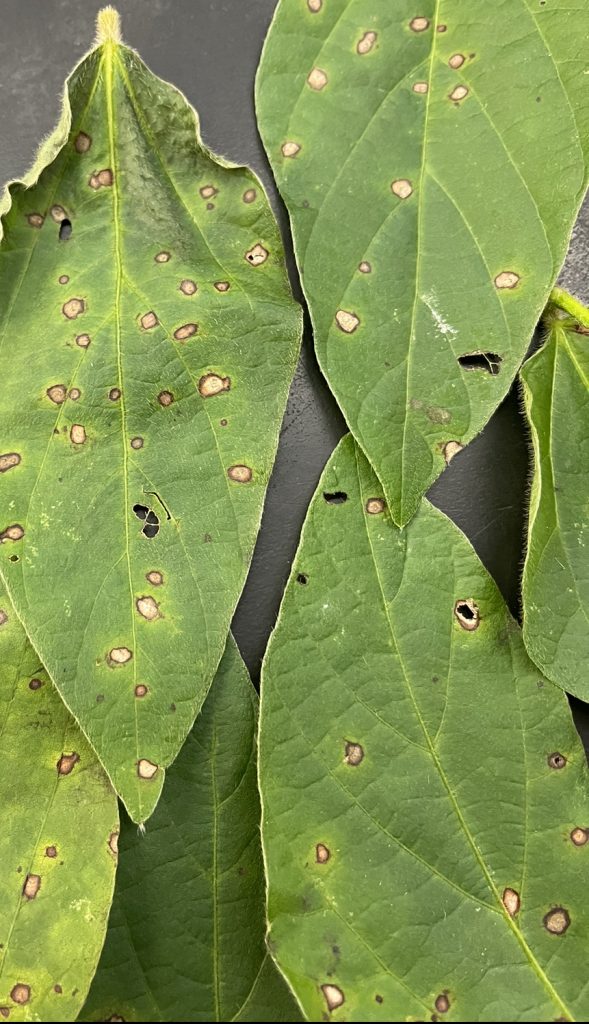The Situation
I have heard from several growers and county agents that they have been seeing a lot of moldy ears lately. Unfortunately, the drought in June followed by wet conditions in July and early August set the stage for ear rot fungi to infest corn this year. Ear rot diseases are Aspergillus ear rot, Diplodia ear rot, Fusarium ear rot, Gibberella ear rot, Penicillium ear rot and Trichoderma ear rot. Pictures and symptoms and signs of each are below.
Aspergillus ear rot
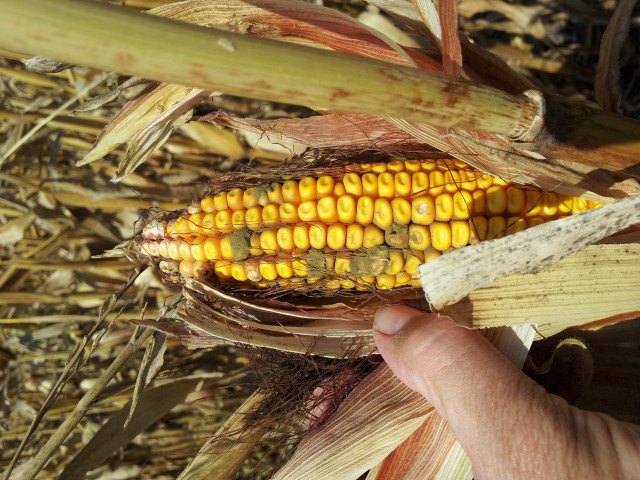
Image by A. Robertson
Diplodia ear rot
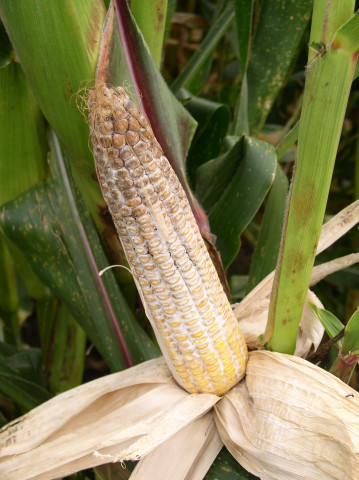
Image by G. Munkvold
Fusarium ear rot
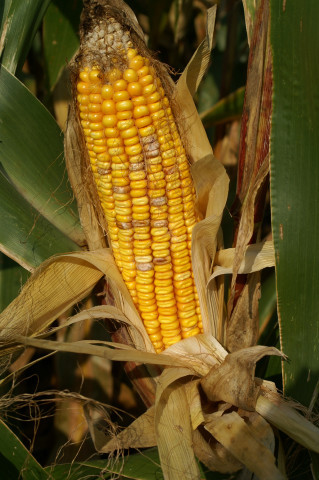
Image by A. Robertson
Starburst kernel pattern from Fusarium ear rot
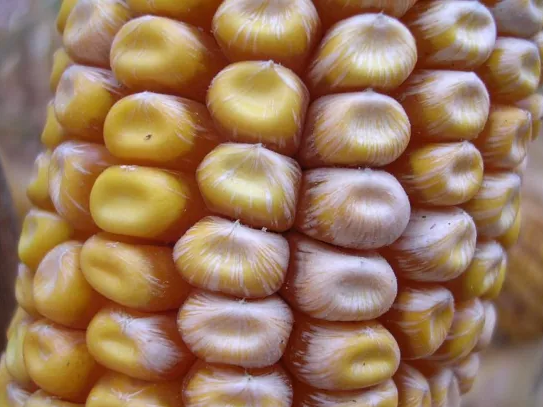
Image by Pioneer Seeds
Gibberella ear rot
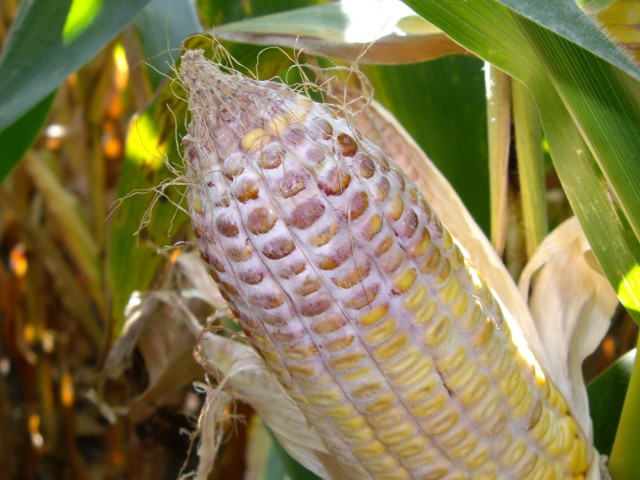
Image by A. Robertson
Penicillium ear rot
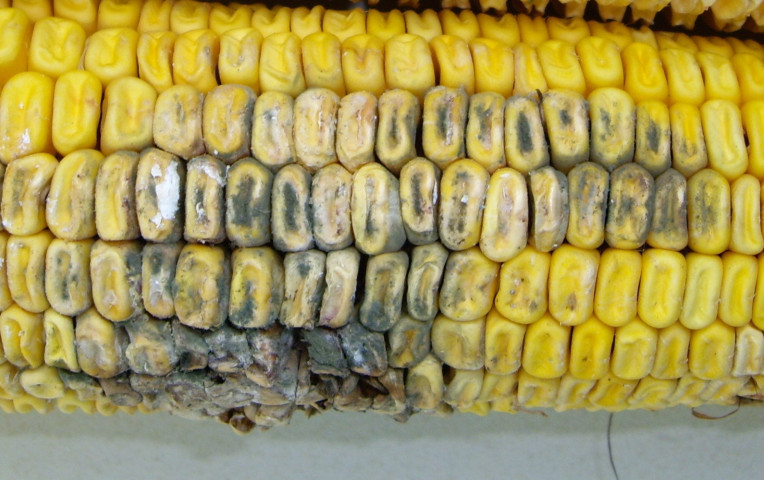
Image by A. Robertson
Trichoderma ear rot
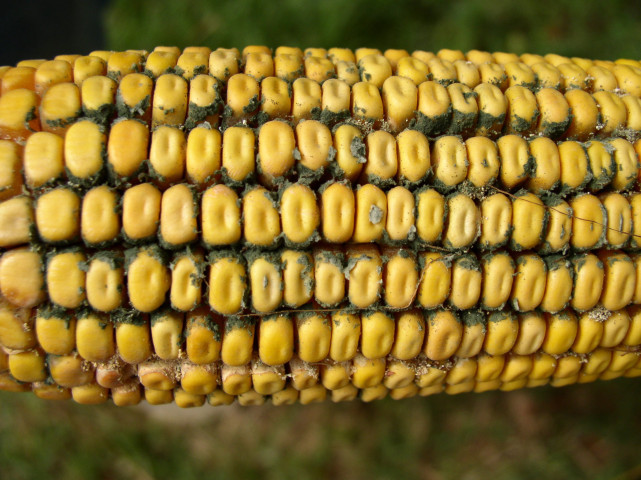
Image by G. Munkvold
Damage Caused by Ear Rots
The most obvious losses due to ear rots are to yield and quality. Probably the biggest concern with ear rots is that some of them produce mycotoxins that harm humans and livestock. Mycotoxin producers are Aspergillus ear rot (aflatoxin), Fusarium ear rot (fumonisin), Gibberella ear rot (deoxynivalenol or DON) and to a lesser degree Penicillium ear rot (PR toxin and Ochratoxin A). Grain cannot be sold for food or feed if aflatoxin levels are 20 ppb (parts per billion), fumonisin levels cannot be higher than 30-50 ppb and DON no higher than 5 ppb.
Assessing Damage
Growers should hand pick 100 ears of corn from a representative area of a field and shuck them. Pick out 10 ears showing the worst ear rot damage. Place these ears side-by-side to assess the average amount of kernel damage. If more than 25% of the kernels on these 10 ears are damaged, you have a problem. If less than 25% of kernels on the 10 worst ears are damaged, check the field again after a rainfall event and plan on harvesting early. Harvesting at more than 20% moisture and drying to less than 15% moisture will significantly reduce harvest losses when compared to waiting for the corn to dry on its own in the field. The extent of the problem can be determined by shelling all 100 ears, mixing the grain thoroughly, and sending a sample (usually 5.0 lbs) to a reputable mycotoxin testing facility. Don’t mix grain from a field affected by ear rots with grain from a field that has not been affected.
What to do if You Have 10% or More Affected Ears
- Harvest early at higher moisture and dry to below 15% moisture
- Adjust combine to discard light or damaged kernels
- Clean harvest equipment between affected fields and clean fields
- Segregate poor quality grain from good grain
- Store affected long-term grain at less than 13% moisture and 30°F or below
- Don’t store affected grain for more than 1 year

